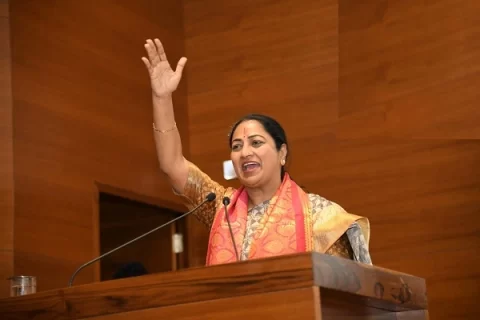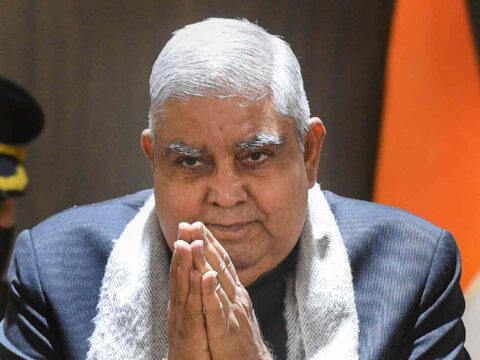COVID Cases in India in 2025: Current Trends, Precautions, and Public Health Updates
Although COVID-19 is no longer classified as a global health emergency, its impact still echoes across the world. In a nation like India, with a population exceeding 1.4 billion, the response to COVID Cases in India has shifted from emergency mode to long-term public health management.
India has made remarkable progress since the devastating second wave of 2021. However, occasional outbreaks continue, influenced by seasonal trends, increased mobility, international travel, and evolving variants. In this article, we’ll explore the current status of COVID cases in India, vaccination progress, safety guidelines, and what every citizen needs to know in 2025.
📈 Current COVID Cases in India (May 2025)
As of May 2025, India is experiencing a low but steady number of daily COVID-19 cases. Most infections are mild or asymptomatic, thanks to extensive vaccination coverage and the development of hybrid immunity (infection + vaccine).
Notable Developments:
- A new Omicron sub-variant (EG, 5) has emerged in Maharashtra and Delhi.
- Hospitalizations are mostly among unvaccinated elderly or individuals with pre-existing conditions.
- The national positivity rate remains below 2%, indicating controlled transmission.
📍 COVID Cases in India Are Rising: State-Wise Breakdown
Although the national outlook is stable, some regions are seeing slight increases in reported cases:
- Maharashtra – Primarily Mumbai and Pune
- Delhi NCR
- Kerala
- Tamil Nadu
- Karnataka
👉 Local authorities in these regions have issued advisories on indoor masking, hand hygiene, and crowd control, especially in public places.
🧪 COVID Testing and Surveillance in India
Testing continues to be a critical tool for managing COVID-19 in 2025. Two main types of testing are in use:
- RT-PCR Tests – Conducted at airports, major hospitals, and for international travelers.
- Rapid Antigen Tests – Available at clinics and pharmacies for quick results.
In addition, the ICMR and the Ministry of Health and Family Welfare publish daily dashboards to report:
- New cases
- Test positivity rates
- Hospital bed availability
- Variant tracking data
💉 Vaccination Status in India (2025 Update)
India continues to run one of the world’s largest COVID-19 vaccination programs. So far:
- Over 2.5 billion doses have been administered.
- 85% of adults are fully vaccinated.
- Booster doses have been prioritized for:
- Frontline workers
- Senior citizens
- Individuals with chronic conditions
Approved Vaccines in Use:
- Covishield
- Covaxin
- Corbevax
- Intranasal iNCOVACC
- International mRNA vaccines (available in metro cities)
🔄 Booster Dose Guidelines (2025)
To maintain immunity, the Health Ministry recommends a booster shot every 12 months, especially before:
- The winter flu season (Dec–Feb)
- The monsoon period (June–Sept)
💡 Citizens can schedule their booster shots via:
- Government PHCs
- CoWIN portal
- Private hospitals
🤒 Symptoms to Watch For in 2025
While most COVID-19 symptoms remain familiar, newer variants have added some unusual signs.
Common Symptoms:
- Fever, chills
- Dry cough, sore throat
- Body aches
- Loss of smell or taste
Less Common Symptoms:
- Conjunctivitis (pink eye)
- Stomach upset
- Headaches or rashes
⚠️ Seek medical advice if symptoms persist beyond 3 days or worsen suddenly.
✅ COVID Safety Guidelines to Follow in 2025
As the country adjusts to post-pandemic life, individual responsibility is more important than ever. To stay protected:
- 😷 Wear a mask in crowded areas and clinics
- 🧴 Use hand sanitizer or wash hands frequently
- 🤒 Avoid close contact when you’re unwell
- 🏠 Stay home if you test positive or have symptoms
- 💉 Stay updated with booster vaccinations
- 📲 Follow local news alerts for outbreak notifications
🌐 Rise of Telemedicine and Online Healthcare
The pandemic accelerated the growth of telemedicine in India. Now, millions benefit from:
- Online doctor consultations
- E-pharmacy deliveries
- AI-powered symptom checkers
This has made healthcare more accessible, especially in rural and tier-2 cities, while also reducing unnecessary exposure.
💼 India’s Economic and Social Recovery
The pandemic affected every sector of life. However, India is showing signs of a strong rebound:
- Unemployment is gradually decreasing
- Travel and tourism industries are bouncing back
- Remote/hybrid work is now the new standard
- Public hygiene and mental health awareness have improved
Still, the emotional toll from 2020–2022 lingers, especially among healthcare workers. Counseling programs and support groups are being expanded to address this.
🧠 Understanding Long COVID in India
A growing number of Indians are experiencing Long COVID, characterized by:
- Chronic fatigue
- “Brain fog”
- Breathlessness
- Joint and muscle pain
🚑 Long COVID Clinics are now available across major hospitals to offer rehabilitation and support.
New Corona Virus 2.0: New XEC Threat The COVID-19 pandemic has continued evolving as new variants have emerged. As we fast-forward to 2025, we face the latest development in this ongoing.
Final Thoughts
While COVID-19 may no longer dominate headlines, it hasn’t disappeared. India’s resilience, bolstered by widespread vaccination, robust surveillance, and community awareness, continues to protect its citizens.
As we navigate through 2025, staying vigilant, informed, and proactive remains our best defense. Prevention, early detection, and updated vaccinations are key to ensuring that COVID-19 stays under control.
📌 Frequently Asked Questions (FAQs)
Yes, but they are significantly reduced. Localized outbreaks may still occur. Testing and precautionary measures are important.
Absolutely. Vaccines remain effective against severe illness, hospitalization, and most known variants.
Yes. If your last booster was over 12 months ago, you should get one, especially if you’re in a high-risk group or travel frequently.
Isolate immediately, inform close contacts, and monitor your symptoms. Seek medical care if necessary.
Nationwide, it’s optional. However, states like Maharashtra and Kerala may mandate masks during seasonal surges.
Yes. Domestic travel is open, but some international destinations may require vaccination proof or recent RT-PCR reports. Always check travel advisories.





